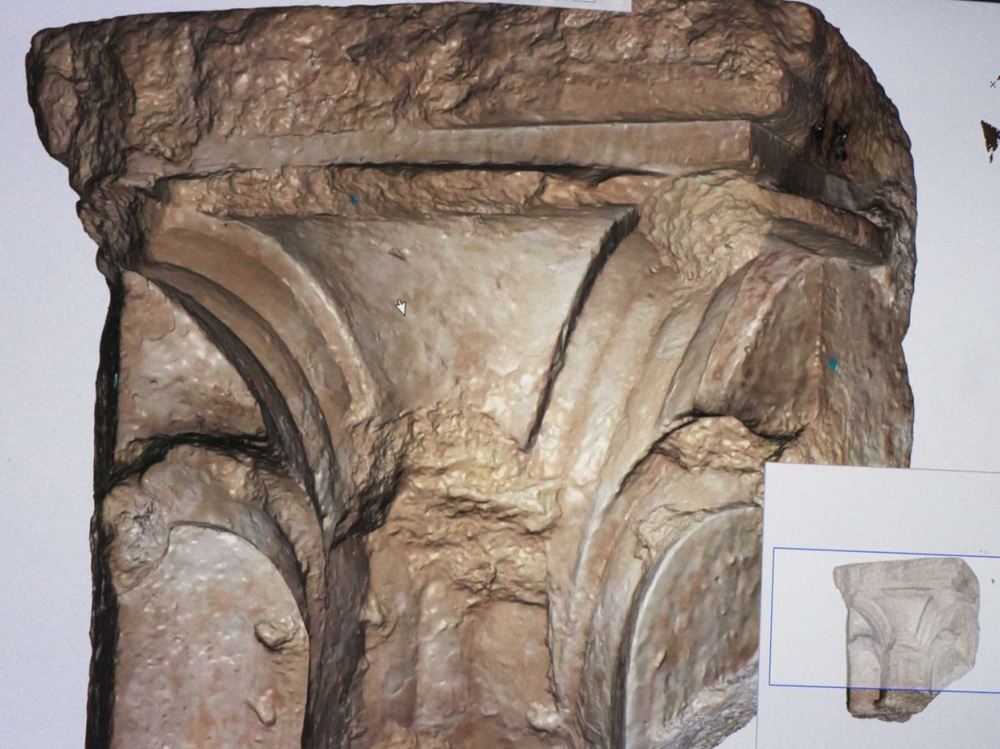



The title might suggest an exciting science fiction story at first glance, but we want to drop some tidbits about an event even more thrilling.
3D scanning is an innovative technological process that allows the creation of three-dimensional digital representations of real objects. Measurement accuracy: 1 micrometer, which is one-thousandth of a millimeter, 1 millimeter = 1000 microns!
Digitization is an important tool for preserving artifacts, so the Blessed Gizella Archdiocesan Collection has developed a comprehensive digitization program, the first step of which is the scanning of medieval stone carvings. As the carvings from Castle Hill are preserved by both the Laczkó Dezső Museum and the Archdiocesan Collection, the project is being carried out jointly by the two institutions. Besides documentation, we want to understand every detail of the stones, and the use of the obtained data and images is limited only by imagination. With digital copies, many magical scenarios can be conjured to dazzle the eyes/mind/imagination. From a scientific perspective, we can create partial or complete structural digital reconstructions, and imagine traveling back in time to enter Saint George's Chapel or the two-story, still intact Gizella Chapel with VR glasses.
From chief engineer Szabolcs Benedek, we learned that almost all objects in the world-famous Louvre Museum have already been scanned and presented digitally to the public. Optical surface scanners can photograph up to ten million points on objects, with points being a few hundredths of a millimeter apart. (For comparison: a light brown hair is 3-4 hundredths of a millimeter thick.) Besides overwhelming accuracy, the industrial high-end metrological instrument can also record colors. The number of possible applications is endless; in the fashion industry, for example, they scan the model and can manufacture completely tailor-made outfits.
In the pictures and videos, a piece of the rib of the Gizella Chapel can be seen during scanning. Every moment of this exceptional process is filled with excitement, as such a large carved, painted stone can reveal a lot of new information. For example, whether it had a secondary life, meaning how many times and where it was used over the centuries, what layers of paint were applied to its surface, what replaced this piece? The Gizella Chapel is an outstanding monument of our Árpádian art, so any information that expands our current knowledge is extremely valuable.